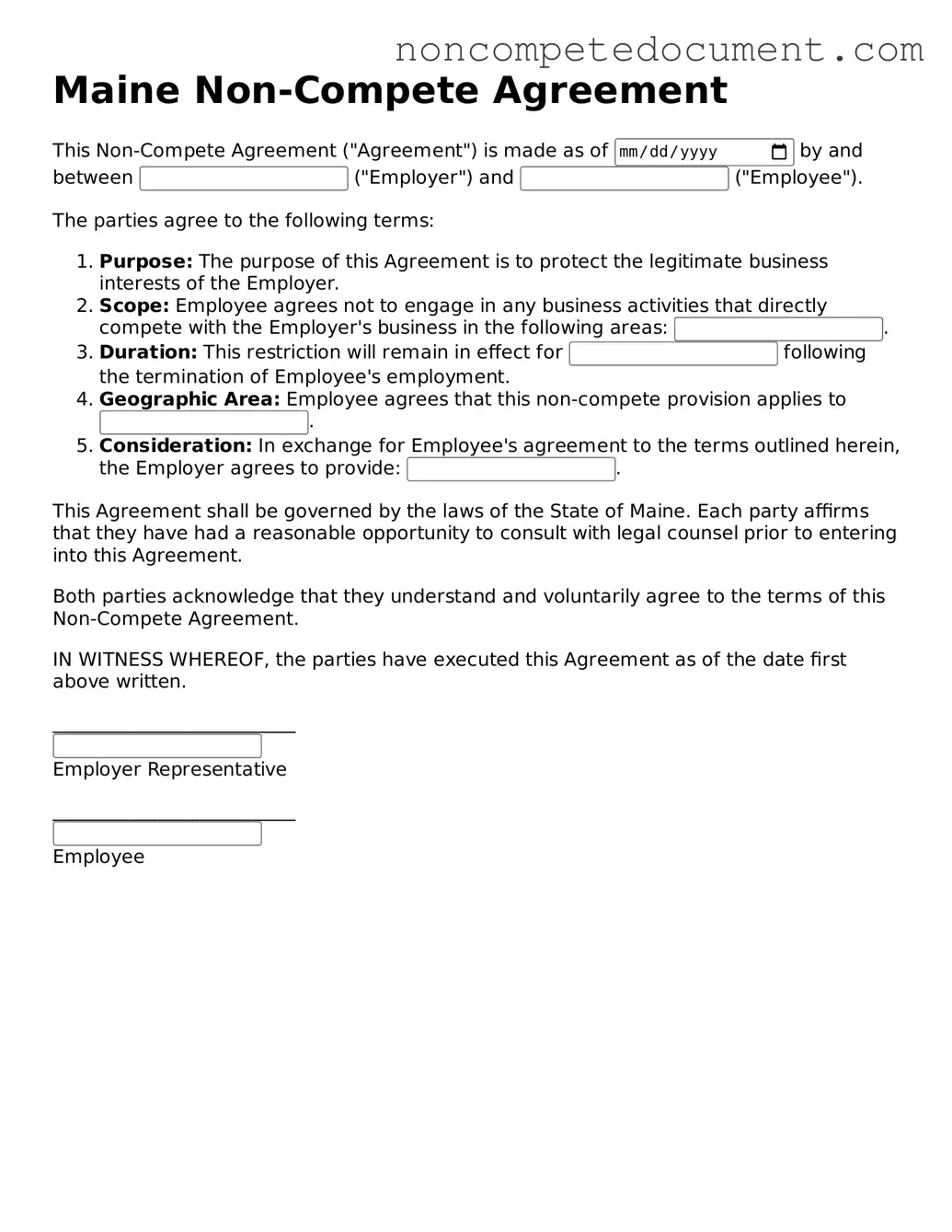Filling out a Non-compete Agreement form in Maine can be a straightforward process, but many people make common mistakes that can lead to complications down the line. One frequent error is not fully understanding the terms of the agreement. A non-compete clause restricts an employee's ability to work in similar fields after leaving a job. If the terms are unclear, it could lead to unintended restrictions on future employment.
Another mistake is failing to specify the duration of the non-compete. Many individuals simply leave this section blank or write vague terms. A well-defined time frame is crucial. Without it, the agreement may be deemed unenforceable. It’s essential to be clear about how long the restrictions will last.
Some people overlook the geographical scope of the non-compete. This section should clearly outline the areas where the restrictions apply. A common error is making the geographical limits too broad, which could make the agreement invalid. A reasonable geographic area should be defined to ensure enforceability.
Inadequate consideration is another pitfall. A non-compete agreement must provide something of value to the employee in exchange for signing. This could be a job offer, training, or other benefits. If this exchange is not clear, the agreement may not hold up in court.
Additionally, many individuals neglect to review the entire document before signing. Skimming through the agreement can lead to missing critical details. It’s important to read every section carefully and understand the implications of what is being signed.
People often forget to consult with a legal professional. While it may seem tempting to fill out the form on your own, a legal expert can provide valuable insights. They can help clarify any confusing terms and ensure that the agreement complies with Maine law.
Lastly, some individuals fail to keep a copy of the signed agreement. After signing, it’s crucial to retain a copy for personal records. This ensures that you have access to the terms and conditions if any disputes arise in the future. Keeping a copy can save you a lot of headaches later on.
